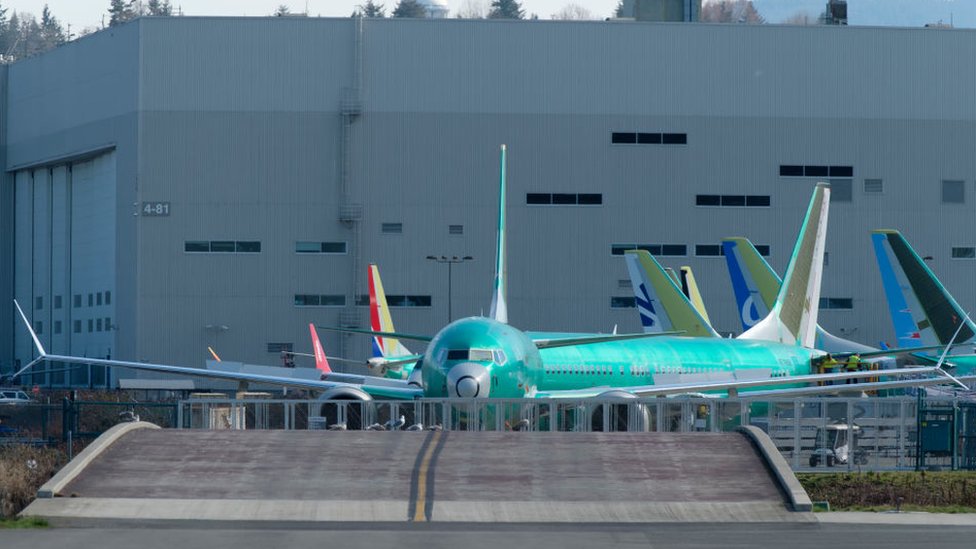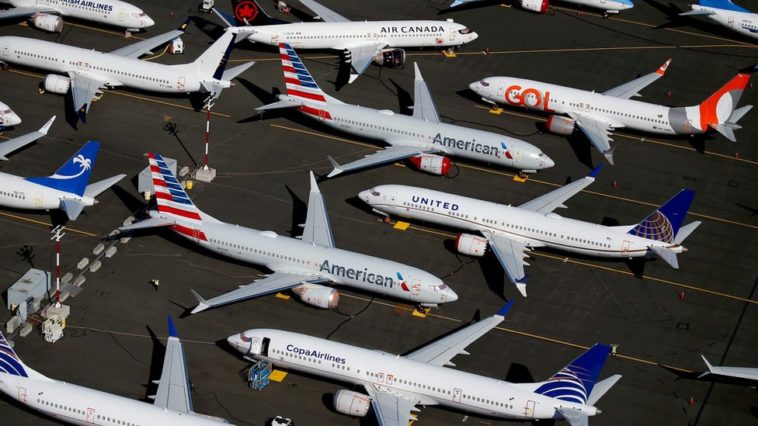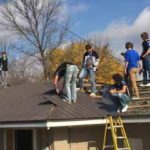European regulator says Boeing’s 737 Max is safe

Getty Images
The head of Europe’s aviation safety agency, EASA, has told the BBC he is “certain” Boeing’s 737 Max is now safe to fly.
Executive Director Patrick Ky said his organisation had “left no stone unturned” in its review of the aircraft and its analysis of design changes made by the manufacturer.
The plane was grounded in March 2019.
That was after it was involved in two catastrophic accidents, in which a total of 346 people died.
It has already been cleared to resume flights in the US and Brazil. EASA expects to give permission for it to return to service in Europe in mid-January.
The plane’s first accident occurred in October 2018, when a Lion Air jet came down in the sea off Indonesia.
New software
The second involved an Ethiopian Airlines version that crashed shortly after takeoff from Addis Ababa, just four months later.
Both have been attributed to flawed flight control software, which became active at the wrong time and prompted the aircraft to go into a catastrophic dive.
Since the Ethiopian crash, EASA has been carrying out a root-and-branch review of the 737 Max’s design, independently from a similar process undertaken by the US regulator, the Federal Aviation Administration (FAA).
The review, says Mr Ky, went well beyond the immediate causes of the two accidents and the modifications proposed by Boeing.

“We went further and reviewed all the flight controls, all the machinery of the aircraft”, he explains.
The aim, he says, was to look at anything which could cause a critical failure.
In order to return to service, existing planes will now have to be equipped with new computer software, as well as undergoing changes to their wiring and cockpit instrumentation.
‘Confident’ of safety
Pilots will need to undergo mandatory training, and each plane will have to undergo a test flight to ensure the changes have been carried out correctly.
US regulators have set out similar conditions.
As a result, Mr Ky insists, “We are very confident that it is now a very safe aircraft.”
Most of the initial safety certification work on the 737 Max was carried out by the FAA, and simply endorsed by EASA under the terms of a long-standing international agreement.
But with the FAA now facing intense criticism for allowing an apparently flawed aircraft into service, Mr Ky says in future, things will be done differently.
“What is certain is that there were lessons learned from this, which will trigger new actions from our side”, he explains.
In particular, where EASA is not the primary authority carrying out safety work, it will examine other people’s decisions much more closely.
“We will perform our own safety assessment, which is going to be much more comprehensive than it used to be”, he says.
But have regulators lost credibility and public confidence since the disasters?
“I hope not”, says Mr Ky. “I think we have made a lot of progress in assessing what went wrong and what can be made better
“I hope the public trusts in us when we say we think, we are certain, that the aircraft is safe to fly”.
Published at Mon, 21 Dec 2020 00:08:00 +0000






Comments
Loading…